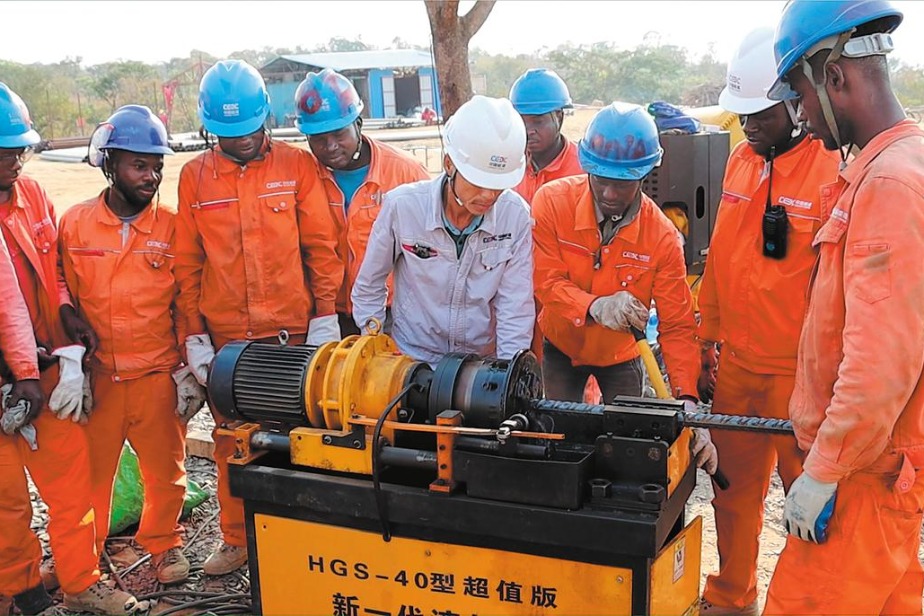Coastal regions brace for powerful Typhoon Ragasa
Schools, trains shut down as big storm nears landfall in the Greater Bay Area

As Super Typhoon Ragasa approaches, public transportation in Guangdong province — particularly train services — will be heavily disrupted starting on Tuesday, while most coastal cities in the province have suspended school, work, production and business operations.
Ragasa, the 18th typhoon of 2025, was upgraded to a super typhoon by China's National Meteorological Center on Sunday morning, with the maximum wind force near the center reaching above level 17.
High-speed and regular trains within Guangdong will gradually be suspended from noon on Tuesday, with the range of suspensions adjusted systematically according to the storm's impact, China Railway Guangzhou Group said on Monday. All train services in the province will be suspended on Wednesday, it added. Services are expected to resume once the typhoon weakens, with schedules updated accordingly.
The typhoon is forecast to make landfall along the coast from Huizhou in Guangdong to Wenchang in Hainan province between the early morning and afternoon on Wednesday. At that time, it is expected to be a strong typhoon or super typhoon, with winds of level 14 to 16, said Wang Haiping, chief forecaster at the National Meteorological Center.
"One of the main reasons for the high intensity of Typhoon Ragasa is that the ocean has been continuously heated throughout the summer, resulting in relatively high sea temperatures after autumn," Wang said. He added that typhoons in autumn often interact with cold air masses moving south, a process that lifts warm, moist air and can trigger extreme rainfall.
"The strong typhoon will bring heavy to torrential rainfall in South China's coastal area," Wang said at a Monday news conference.
Authorities in Guangdong on Monday morning raised the province's wind emergency response to Level II, the second-highest in China's four-tier warning system.
Local railway operators have adjusted train operations based on the storm's expected path. Guangzhou Baiyun International Airport said it would adjust or cancel flights depending on conditions, while ferry service to Chuanshan Islands in Jiangmen will be suspended from Tuesday as nearby sea winds are expected to reach about 72 kilometers per hour.
As of 10 am Monday, Guangdong's Maritime Safety Administration had relocated more than 10,000 coastal vessels to safe waters.
By Monday afternoon, authorities in Zhuhai, Dongguan, Shanwei, Shenzhen, Zhongshan, Jiangmen, Yangjiang and Huizhou had announced suspensions of classes, work, production, public transport and business operations on Tuesday and Wednesday.
In Hong Kong, education officials said classes at all schools — including secondary schools, primary schools, special schools, kindergartens, kindergarten-cum-child care centers and evening schools — would be suspended for both days.
Hong Kong International Airport will remain open during the storm, but a substantial number of flights are expected to be grounded, Airport Authority Hong Kong said. Wing Yeung Tak-wing, the authority's service delivery director, told reporters the airport would see a significant reduction in flights after 6 pm on Tuesday and a full-day impact on Wednesday. Passengers are urged to confirm flight statuses with airlines before heading to the airport.
In Hainan, the Haikou Transportation and Port & Shipping Administration announced that Xinhai Port, Xiuying Port and Railway South Port will suspend operations beginning at 6 pm on Tuesday. The closures are expected to last until Thursday evening, depending on weather conditions.
Although the typhoon's eye may not make direct landfall on Hainan, the island's northern and western coasts are forecast to see winds of level 10 to 12, with torrential rain expected in Haikou and other regions.
Wang Changxiao, director of the disaster prevention and mitigation department at the Emergency Management Bureau of Shenzhen Municipality, urged residents to prepare sufficient emergency supplies such as bread and medicine.
"The super typhoon will become one of the most significant storms to hit the Guangdong-Hong Kong-Macao Greater Bay Area since 2018," Wang said. "While staying at home, residents should secure doors and windows and have sufficient emergency supplies ready."
Atlas Shao in Hong Kong, Chen Bowen in Haikou and Zhao Yimeng in Beijing contributed to this story.





































